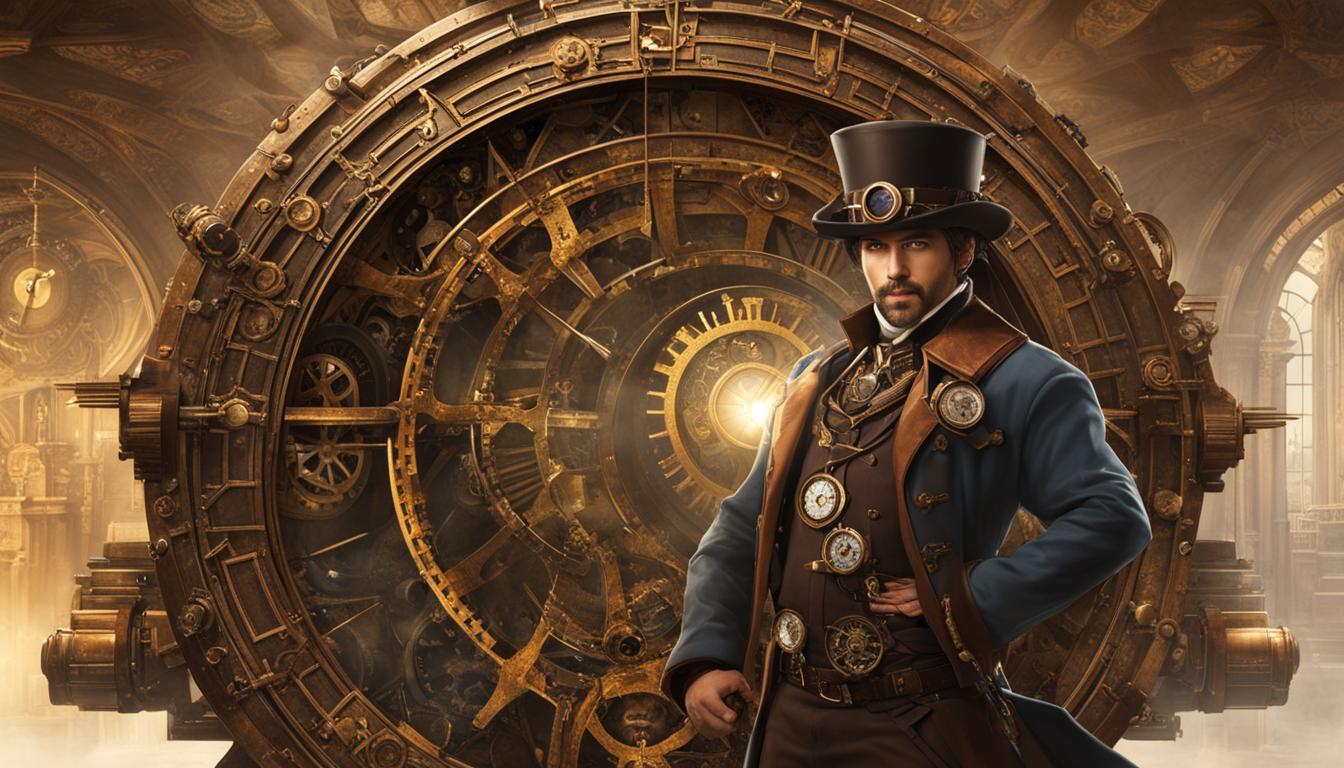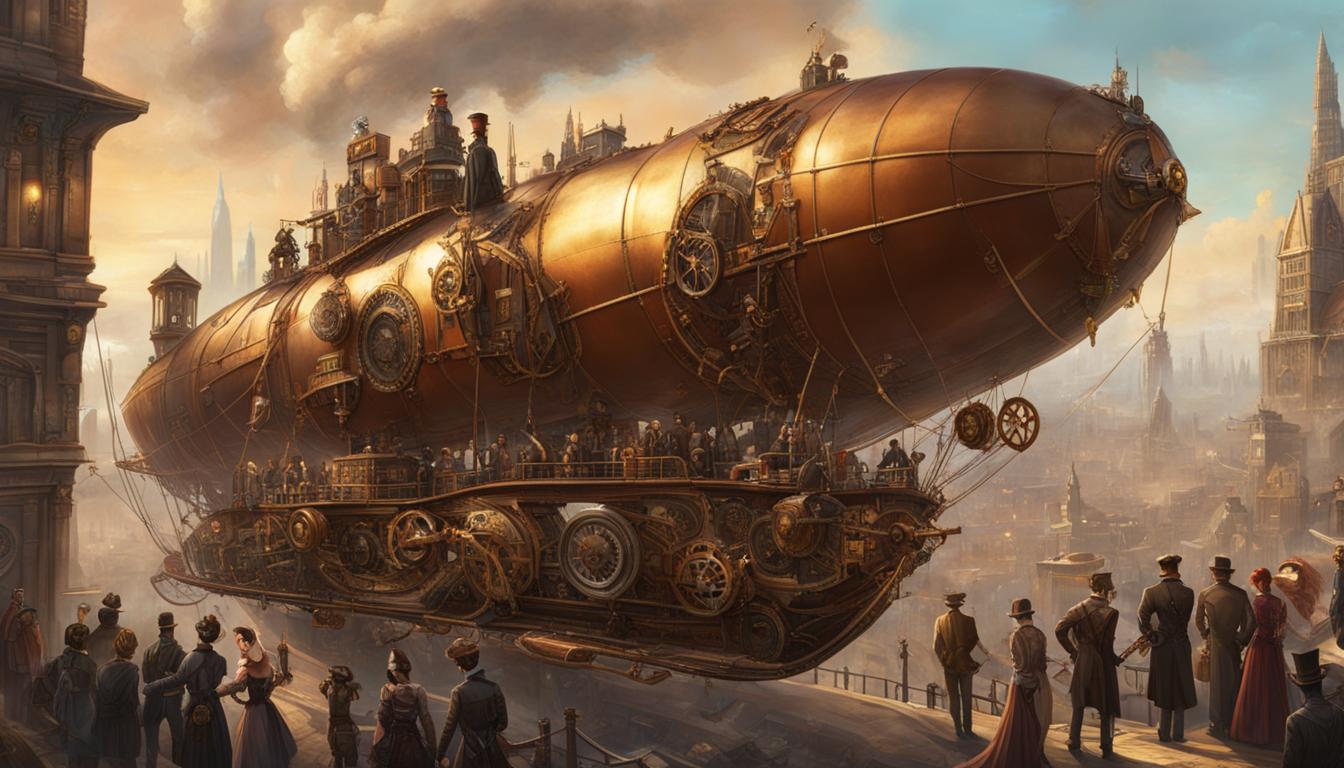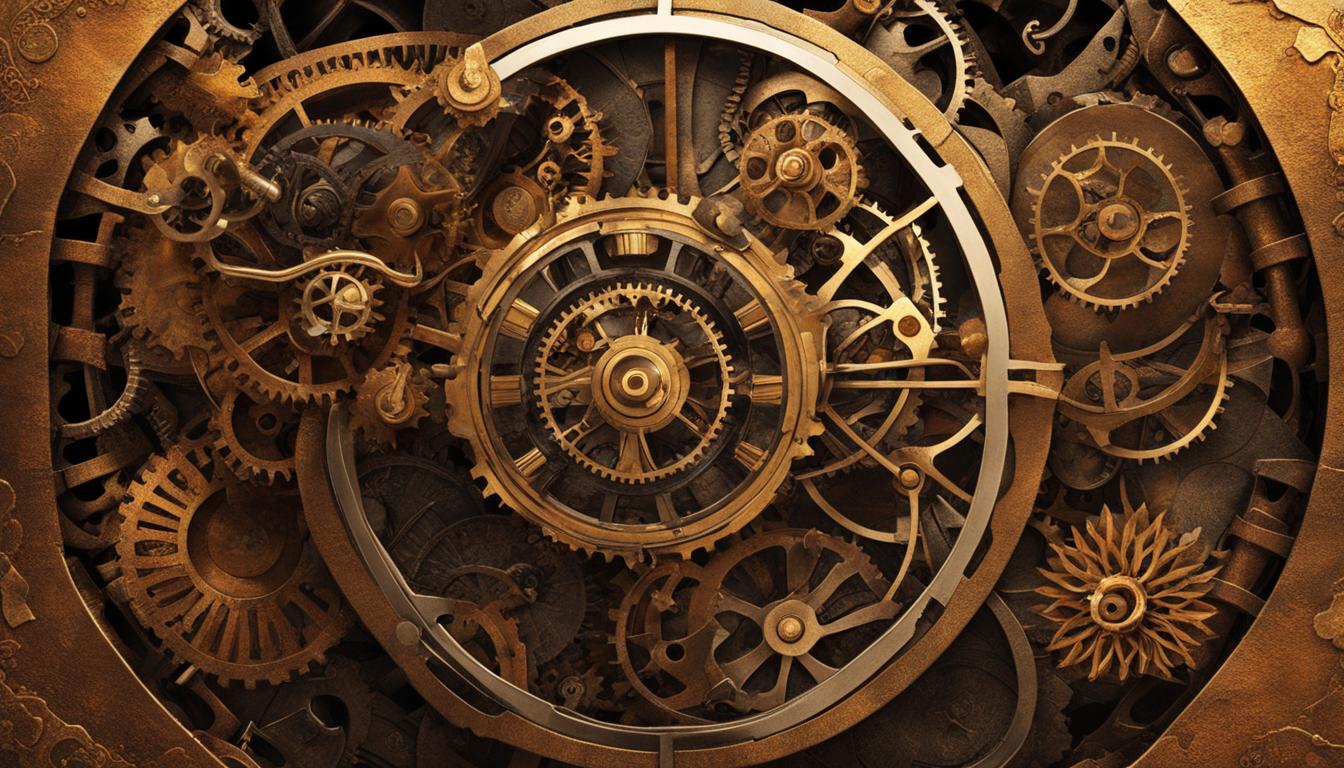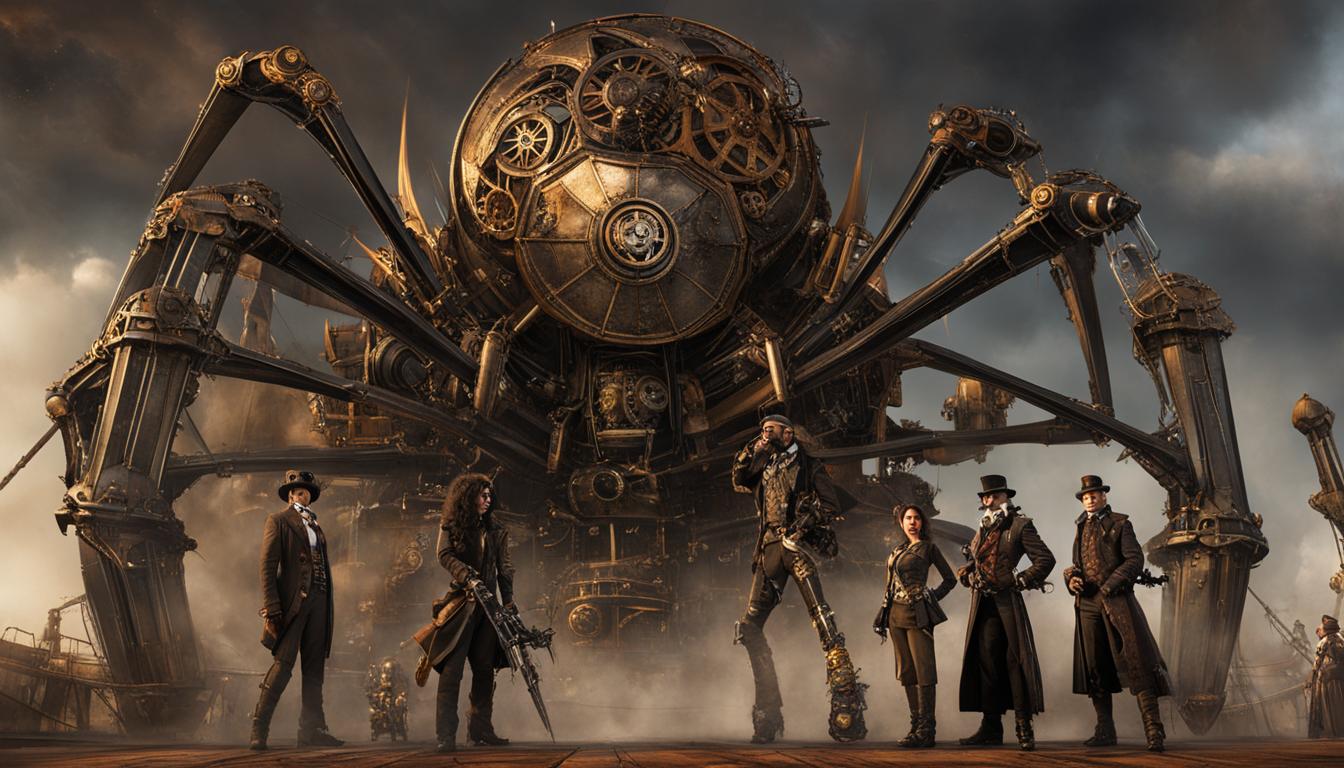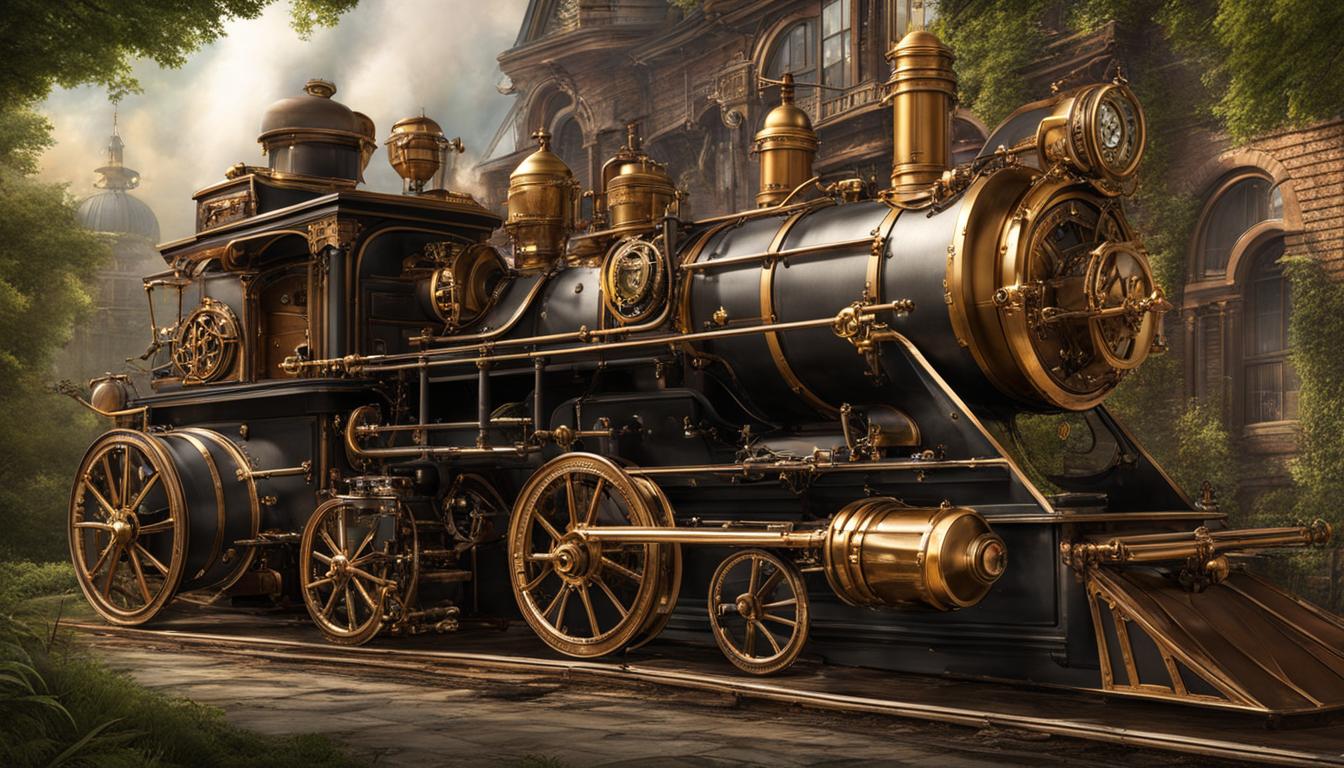Steampunk, a captivating subgenre of science fiction, transports readers to an alternative past that seamlessly blends history, imagination, and technology. In this article, we will explore the historical periods that play a significant role in shaping the steampunk aesthetic. From the iconic Victorian era to the unconventional setting of the American Wild West, steampunk authors take readers on thrilling adventures through time. Get ready to embark on a journey filled with steam-powered marvels, altered historical timelines, and the charm of yesteryears.
Key Takeaways:
- The Victorian era is a favorite historical period in steampunk, with its industrial revolution influence and steam-powered technology.
- The American Wild West serves as an unconventional and exciting setting for steampunk adventures, blending the rugged frontier with advanced gadgets.
- Steampunk offers alternative historical timelines, introducing alterations to well-known events and incorporating famous historical figures into narratives.
- The aesthetic appeal of steampunk, with its iconic imagery of gears and steam-powered machinery, adds to the allure of the genre.
- The concept of time travel and manipulation provides a unique twist on traditional storytelling in steampunk narratives.
The Victorian Era: A Steampunk Favorite
Steampunk, as a genre, draws heavily from the Victorian era, a period marked by significant technological advancements and the rise of steam-powered machinery. The Industrial Revolution, which transformed industries and societies with the introduction of steam power, plays a central role in shaping the steampunk aesthetic. In steampunk tales, authors imagine a world where steam technology remained dominant and continued to evolve, creating intricate devices and fantastical inventions.
The Victorian era’s iconic fashion, with its ornate dresses and tailored suits, also contributes to the visual appeal of steampunk narratives. The blend of Victorian elegance and futuristic technology creates a captivating juxtaposition, capturing readers’ imaginations and immersing them in a world both familiar and fantastical. Whether it’s airships floating in the sky or clockwork automatons walking alongside humans, the fusion of Victorian aesthetics and steam-powered technology is a hallmark of the steampunk genre.
Steampunk authors often enjoy exploring the possibilities of an alternative past, where steam-powered innovation took precedence over other technological advancements. By reimaging historical events and introducing fictional inventions seamlessly embedded in the Victorian context, steampunk narratives offer a unique twist on traditional storytelling. This allows readers to experience a world where history diverged from our own and where steam-powered wonders abound.
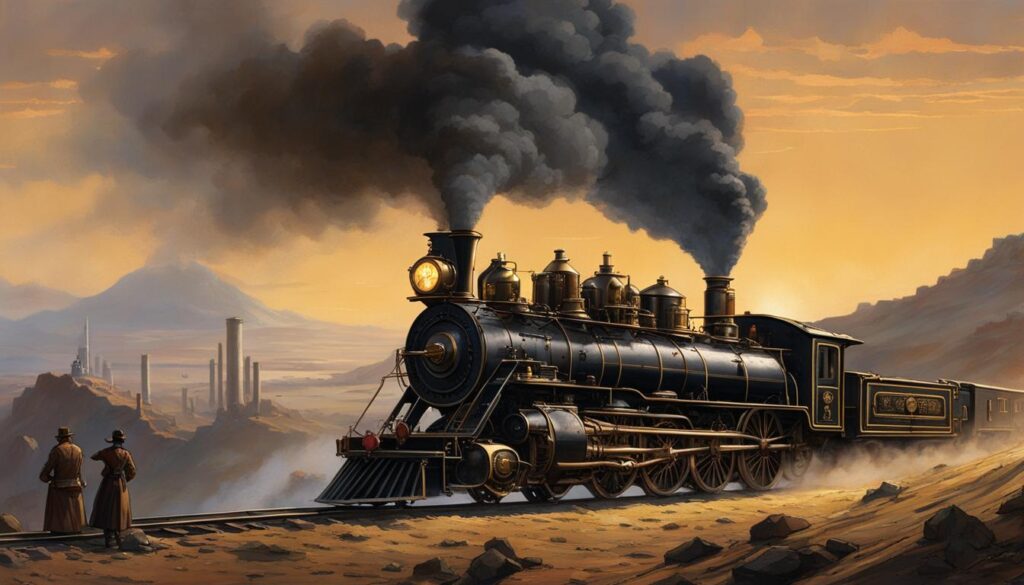
Table: Steampunk Elements in the American Wild West
| Elements | Description |
|---|---|
| Steam-powered transportation | Steam-powered locomotives, airships, and steam carriages provide unique modes of transportation in the Wild West. |
| Unconventional weaponry | Steam-powered guns, electrified rounds, and other imaginative weapons redefine the concept of firepower in the Wild West. |
| Advanced gadgets | Inventors and tinkerers develop intricate gadgets powered by steam, enhancing the capabilities of the characters in the Wild West. |
| Steampunk fashion | Characters in the Wild West don steampunk-inspired attire, blending elements of Victorian fashion with a Western twist. |
The incorporation of steampunk elements in the American Wild West allows authors to push the boundaries of both genres, creating a rich tapestry of adventure, exploration, and innovation. It offers readers a fresh perspective on familiar themes, making the Wild West an unconventional yet captivating setting for steampunk adventures.
Alternative Historical Timelines: Steampunk’s Playground
One of the defining features of steampunk is the exploration of alternative historical timelines. Steampunk authors thrive on the opportunity to reimagine the past with a twist, introducing alterations to well-known historical events. These creative deviations from established chronology allow for the inclusion of famous historical figures, such as inventors, explorers, and political leaders, in steampunk narratives.
In steampunk fiction, readers may encounter a world where Nikola Tesla’s inventions revolutionized society even more than in reality, or where Leonardo da Vinci’s visionary designs actually came to life. These compelling alterations to history not only add intrigue and mystery to steampunk tales but also showcase the author’s imaginative prowess in seamlessly blending fact and fiction.
Albert Einstein once said, “Imagination is more important than knowledge.” In the realm of steampunk, this sentiment rings true as authors take historical facts and infuse them with a dash of creativity, resulting in captivating narratives that transport readers to parallel worlds.
Furthermore, fictional inventions play a crucial role in shaping the steampunk aesthetic and narrative. Authors craft intricate gadgets, contraptions, and machinery that exist harmoniously within the historical context they have created. These inventions often embody the spirit of the steampunk genre, with their reliance on steam power, gears, and clockwork mechanisms. From airships soaring through the skies to intricate automata and steam-powered weapons, steampunk fiction offers readers a cornucopia of fictional creations that push the boundaries of what is possible.
| Historical Figures in Steampunk Fiction | Fictional Inventions in Steampunk |
|---|---|
| Nikola Tesla | Aetheric Resonator |
| Leonardo da Vinci | Mechanical Wings |
| Ada Lovelace | Analytical Engine |
| Phileas Fogg | Time-Traveling Pocket Watch |
Table: Historical Figures in Steampunk Fiction and their Fictional Inventions
Whether it’s reimagining historical events or inventing never-before-seen gadgets, alternative historical timelines serve as the playground for steampunk authors to weave their tales. This fluidity in chronology allows for endless possibilities, inviting readers to immerse themselves in a world where imagination knows no bounds.
Conclusion
Steampunk, with its unique blend of history, technology, and imagination, has captivated readers around the world. As a genre, steampunk offers a refreshing take on traditional storytelling, transporting readers to alternative pasts where steam-powered machinery and fantastical inventions reign supreme. The aesthetics of steampunk, characterized by intricate gears, Victorian fashion, and ornate architecture, create a visually stunning experience that immerses readers in a world like no other.
One of the most intriguing aspects of steampunk is the concept of time manipulation and alternative historical timelines. Authors skillfully intertwine real historical events with fictional inventions, providing a thrilling twist on familiar narratives. This allows for the inclusion of famous historical figures, who play pivotal roles in shaping these steampunk worlds.
Steampunk continues to evolve and inspire, offering endless possibilities for both authors and readers alike. Whether it’s exploring the wonders of the Victorian era or embarking on adventures in the American Wild West, steampunk transports us to a bygone era filled with excitement and innovation. With its unique aesthetic appeal and imaginative storytelling, steampunk remains a genre that leaves readers eagerly awaiting the next journey into this captivating world.
FAQ
What is steampunk?
Steampunk is a unique subgenre of science fiction that combines elements of the Victorian era with futuristic ideas and technology.
Which historical periods are commonly depicted in steampunk narratives?
The Victorian era and the American Wild West are the most prevalent historical periods in steampunk tales.
How does the Victorian era contribute to the steampunk aesthetic?
The Victorian era, known for its technological advancements and ornate fashion, forms the foundation of steampunk and adds to its visual appeal.
What is the role of the American Wild West in steampunk?
The American Wild West serves as an unconventional setting for steampunk adventures, combining the rugged frontier with steam-powered technology.
Do steampunk narratives alter historical timelines?
Yes, steampunk authors often introduce alternative historical timelines, imagining how the world might have developed differently with advanced steam-powered technology.
Can famous historical figures be included in steampunk narratives?
Yes, steampunk authors often incorporate famous historical figures, such as inventors and political leaders, into their stories.
Are there fictional inventions in steampunk?
Absolutely! Steampunk narratives feature fictional inventions created within the context of the alternative historical timeline.
What makes steampunk appealing to readers?
Steampunk offers a captivating blend of history, technology, and imagination, transporting readers to immersive alternative pasts.
Is the aesthetic of steampunk important?
Yes, the iconic imagery of gears, steam-powered machinery, and inventive fashion adds to the allure and visual appeal of the genre.
Does steampunk involve time manipulation?
Yes, steampunk narratives often explore time manipulation and altered historical timelines, providing a unique twist on traditional storytelling.

